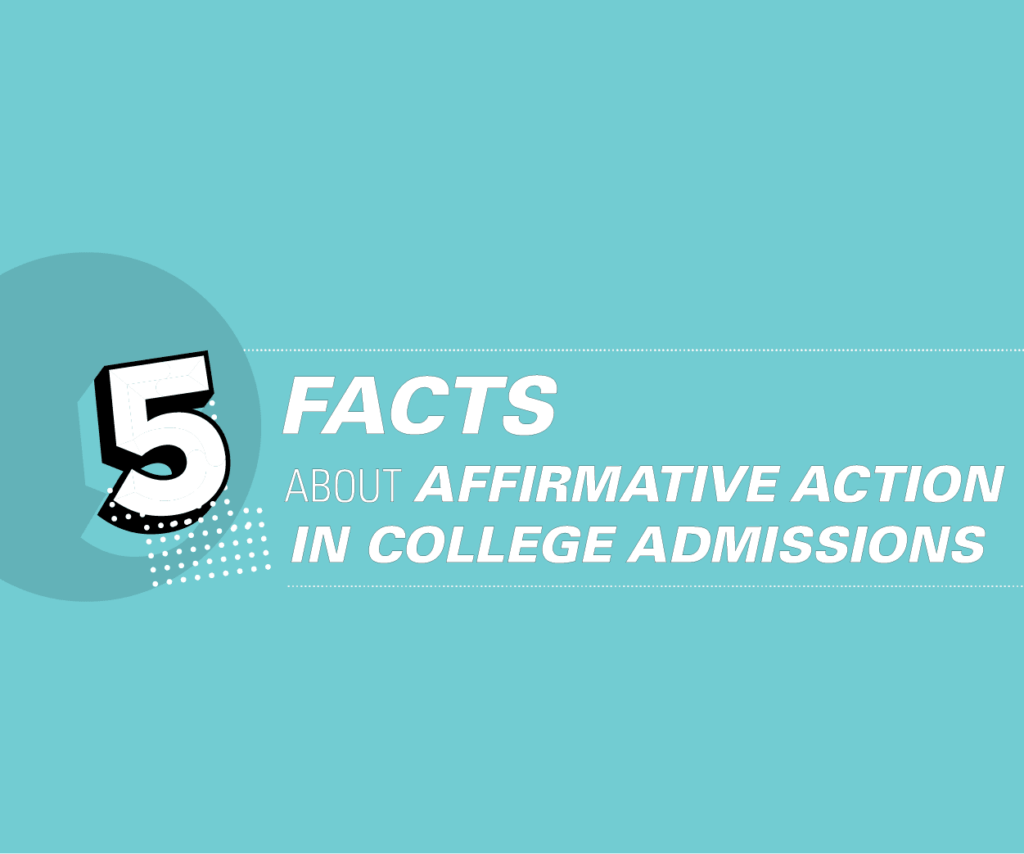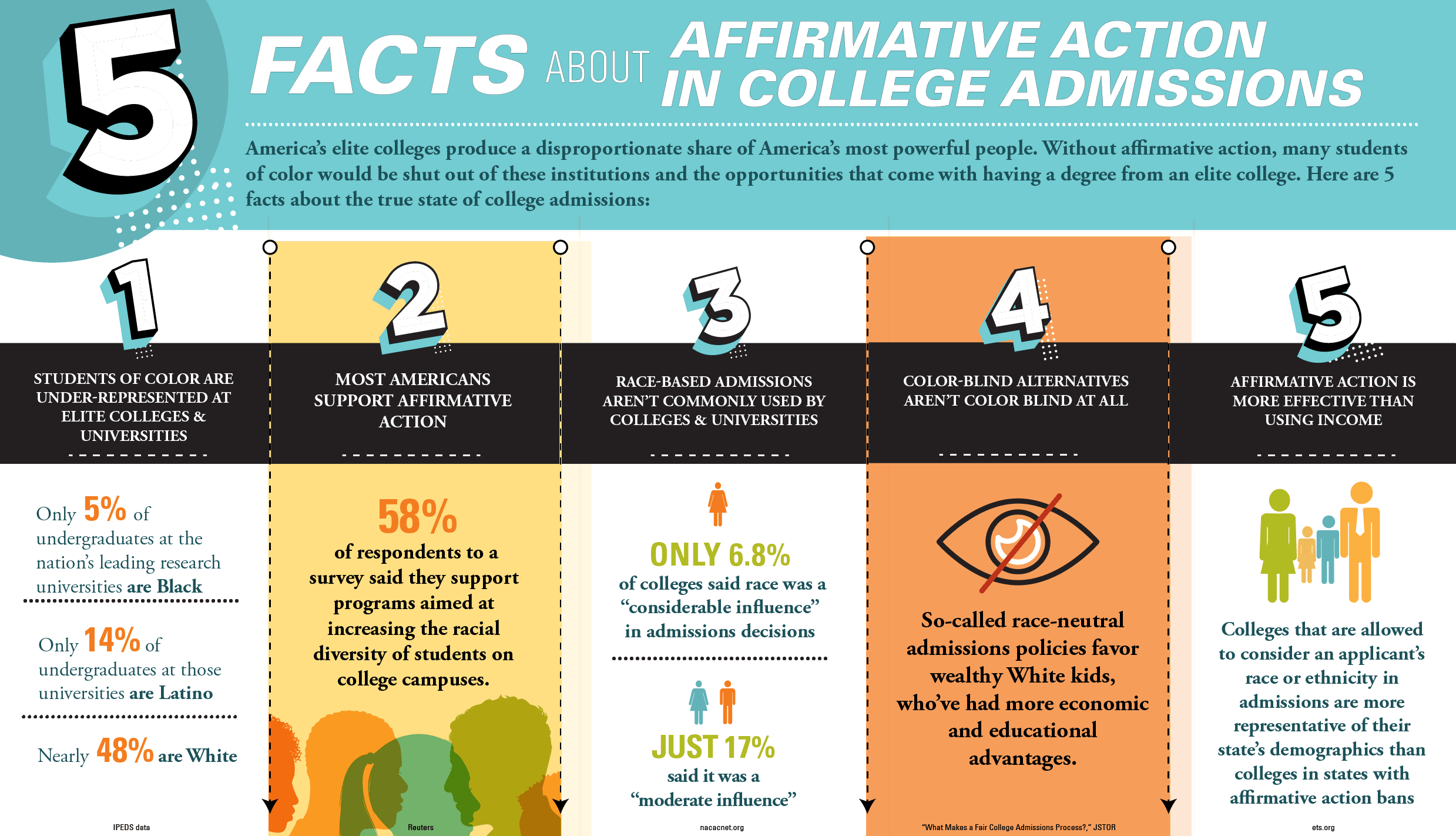INFOGRAPHIC: 5 Facts About Affirmative Action
Like it or not, the hard truth is that America has a long history of discrimination against people of color and women, who have systemically been denied access to voting…

Like it or not, the hard truth is that America has a long history of discrimination against people of color and women, who have systemically been denied access to voting rights, housing, economic development, education access, and more. Unfairness and inequality was the impetus of the Civil Rights Movement, and out of that era came some of the strongest equity-focused legislation and tools meant to address these pervasive inequities.
One of those tools is affirmative action, a set of policies that was designed to eliminate unlawful racial, religious, and gender discrimination among applicants in employment and education that has been in place since 1965. Over the years, not only have affirmative action policies helped to advance equity on campus, but they’ve also furthered the college experience by promoting a campus that is reflective of the changing face of America. However, this spring, the conservative majority Supreme Court could reverse affirmative action, which would make it more difficult for students of color to enter predominately white institutions (PWIs). Decades of equity work stand to be eliminated if affirmative action is wiped out by SCOTUS.
As a reminder, affirmative action has been challenged multiple times in the courts for almost four decades, but the latest case that could decide its future was filed by Students for Fair Admissions against the University of North Carolina at Chapel Hill and Harvard University. The cases allege that UNC discriminated against both Asian American and White students, and that Harvard University discriminated against Asian Americans during their admissions process. The suit further claims that Black and Latino students were given an unfair advantage while applying to both universities. Since 1978, the Supreme Court has upheld affirmative action, but all signs point to those days being over. While colleges are preparing for the worst, affirmative action remains at the center of hotly contested debate and culture war fodder.
For nearly 60 years, public and private universities have been allowed to consider race as just one of a myriad of factors in a candidate’s admissions profile—in fact, less than 7% of colleges said that race was a “considerable influence” in admissions decisions. And Black and Latino students are actually more underrepresented at top colleges and universities than they were 40 years ago. There are a lot of falsehoods swirling about affirmative action and Americans’ opinions on ending it. To think that Black and Latino students have an unfair advantage over others is simply a myth. Here are the true facts about affirmative action:

And check out this video that explains why only race-conscious admissions can fix racism in higher education: